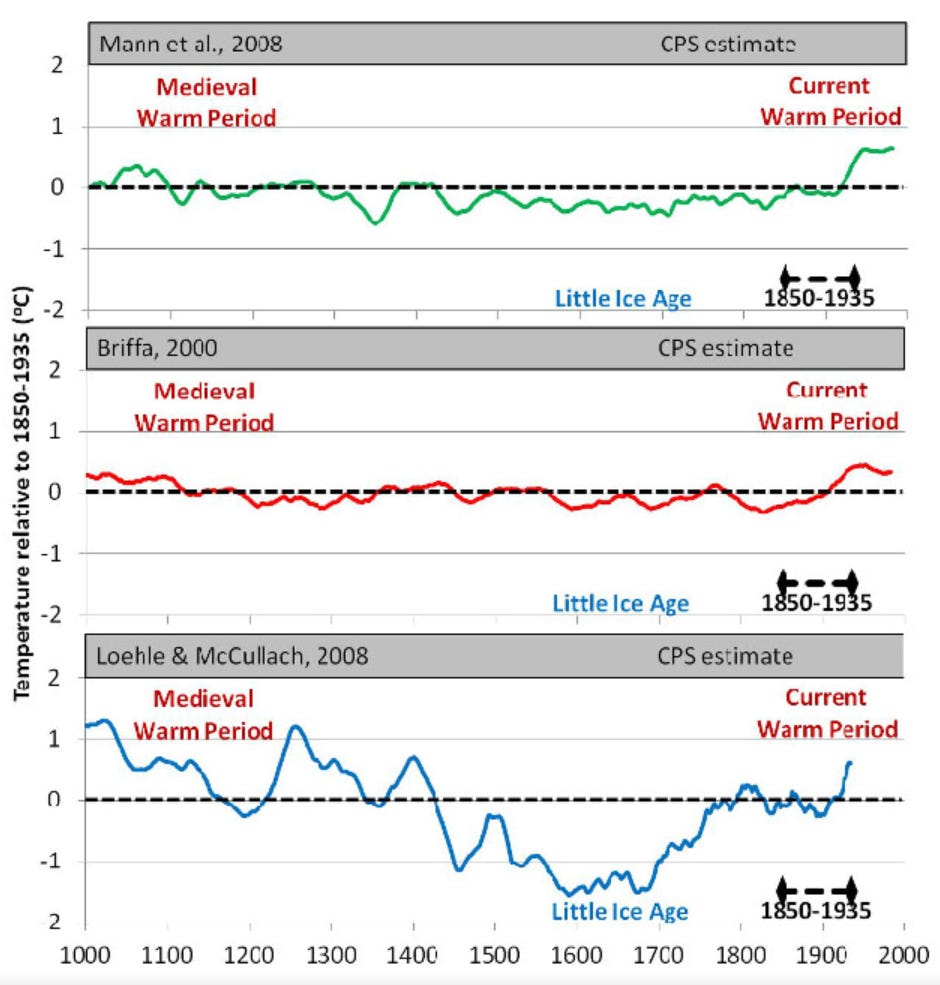The Medieval Warm Period: A Global Phenomenon?
Skepticism and Science - Deciphering the True Scale of Historical Climate Fluctuation
The debate over the characteristics and impact of the Medieval Warm Period (MWP), roughly dated from 950 to 1250 AD, lies at the heart of discussions on historical climate variability and its implications for understanding current climate change.
Following the publication of the Intergovernmental Panel on Climate Change (IPCC) Third Assessment Report in 2001, the MWP was essentially erased from the paleoclimatological record in favor of the ‘hockey stick’ graph. This disappearance remains a point of contention that has been particularly prominent in public and scientific debate.
The ‘hockey stick’ graph, first published by Michael Mann, Raymond Bradley, and Malcolm Hughes in 1999, depicted temperature anomalies over the past millennium. It showed relatively minor temperature fluctuations for most of the last millennium (the "shaft" of the hockey stick) and a sharp rise in temperatures in the 20th century (the "blade" of the hockey stick). This presentation suggested that the modern warming period has been unprecedented over the last millennium. This finding has been at the core of calls for robust measures aimed at addressing climate change.

However, skeptics claim that the MWP was both global in extent and warmer than current temperatures in many regions. Evidence for this comes from several angles, suggesting that the established narrative underestimates the period's warmth and geographic reach. Here, I explore these skeptical viewpoints, considering the evidence and arguments they put forth.
Firstly, a significant point of contention is the geographical distribution of climate proxies, such as tree rings, ice cores, sediment cores, and historical records. Initial research heavily focused on Europe and the North Atlantic, painting a picture of a distinctly warm period in these areas during the MWP. Critics argue that this early focus resulted in a skewed perception of the MWP as a primarily regional phenomenon. However, as research has expanded to include more diverse geographical areas, evidence suggests a more globally synchronized warm period has emerged.
Keep reading with a 7-day free trial
Subscribe to Irrational Fear to keep reading this post and get 7 days of free access to the full post archives.



